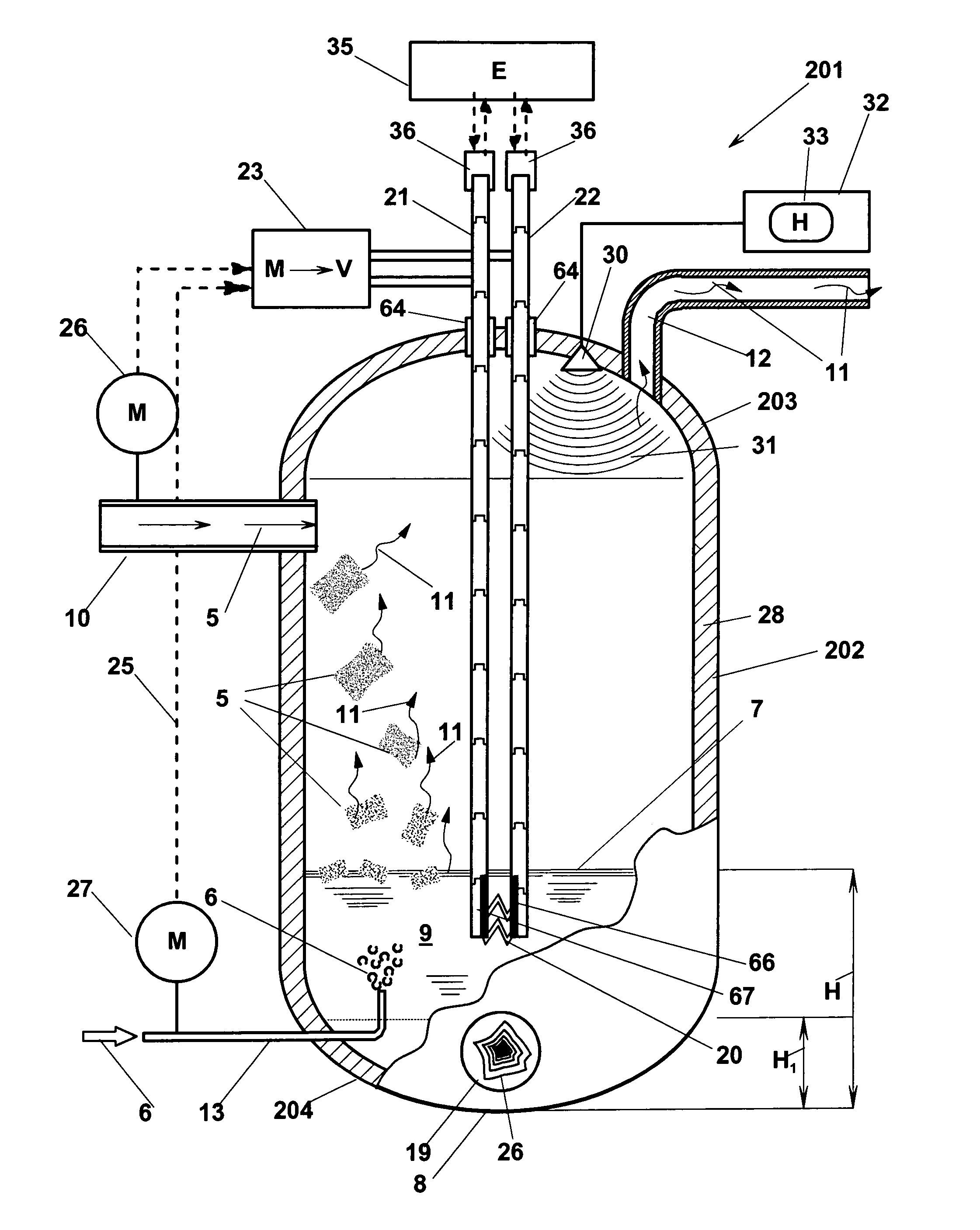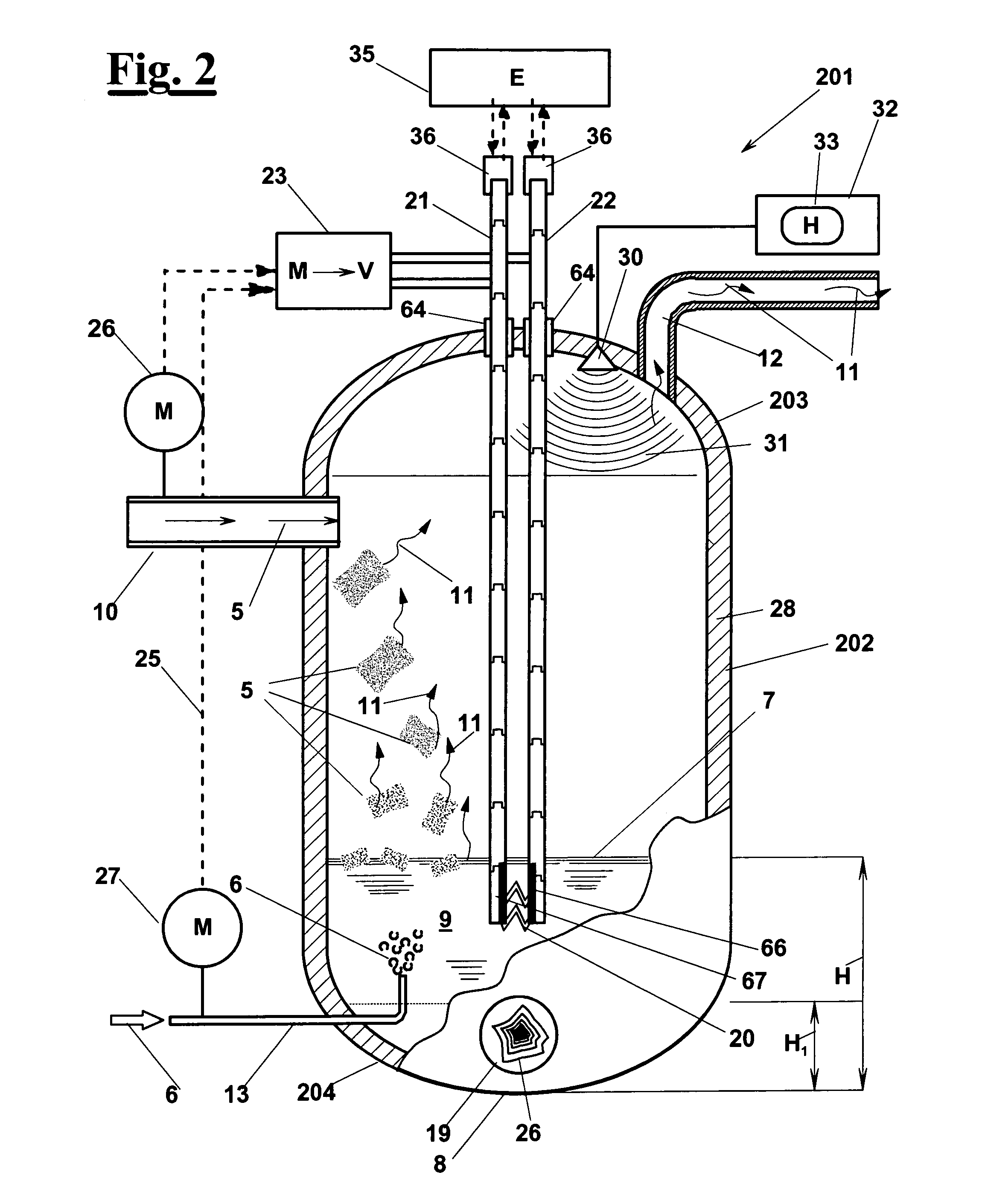Plasma method for disposing of waste material, and apparatus therefor
a technology of waste material and plasma, which is applied in the direction of coking carbonaceous materials, special form destructive distillation, combustion process, etc., can solve the problems of high vacuum, furnace description, and not being well suited to steady feeding of solid waste material, etc., and achieves the effect of reducing energy costs
- Summary
- Abstract
- Description
- Claims
- Application Information
AI Technical Summary
Benefits of technology
Problems solved by technology
Method used
Image
Examples
Embodiment Construction
[0091]With reference to the flow diagram of FIG. 1, a method 100 is described for transforming a waste material, according to the invention. Method 100 comprises a step 110 of prearranging a vessel, a step 111 of heating the vessel up to a conversion temperature, which is normally set between 1600 and 2000° C., as well as a step 112 of depressurizing the vessel to an absolute pressure, which is preferably set between 1 and 10 millibar, and most preferably about 4 millibar. Depressurizing step 112 is followed by a step 120 of introducing the waste material into the vessel; step 120 is carried out in such a way that air is prevented from entering into the vessel together with the waste material, which would cause vacuum loss and combustion of a part of the waste material. The conversion temperature is high enough to cause and maintain a transformation step 130 of the waste material into two fractions, a ionic gas 11, i.e. a plasma, and a substantially liquid fraction 9 that is accumul...
PUM
 Login to View More
Login to View More Abstract
Description
Claims
Application Information
 Login to View More
Login to View More - R&D
- Intellectual Property
- Life Sciences
- Materials
- Tech Scout
- Unparalleled Data Quality
- Higher Quality Content
- 60% Fewer Hallucinations
Browse by: Latest US Patents, China's latest patents, Technical Efficacy Thesaurus, Application Domain, Technology Topic, Popular Technical Reports.
© 2025 PatSnap. All rights reserved.Legal|Privacy policy|Modern Slavery Act Transparency Statement|Sitemap|About US| Contact US: help@patsnap.com



